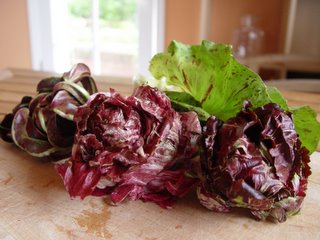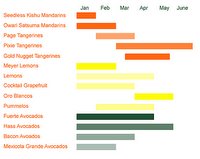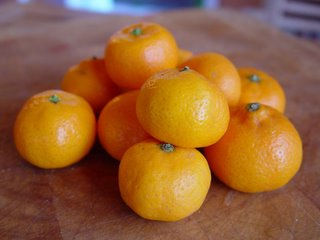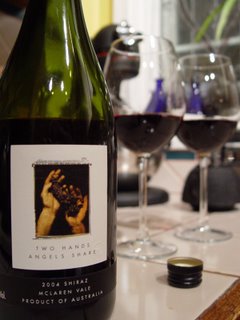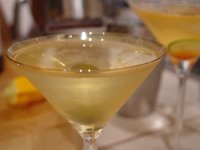
Most years when my birthday rolls around, I have a specific place in mind for dinner. This year my wife surprised me with a trip to
Gregoire. The week before the big night I'd been fighting a cold, and as we piled into the car a steady rain was falling. If you've been to Gregoire, you may think this post will be a sad tale of failed expectations an damp card board boxes. Instead, in spite of some all too loud banter between one of the cooks and one of the diners, the night turned out to be a kind of perfect.
Gregoire occupies a small storefront on Cedar Avenue a block south of
Cesar and
Chez Panisse. Outside the restaurant there are two small tables (not quite 4 tops) and inside there are three bar stools - that's it. The focus at Gregoire is on "high end" take out, which is served up in hexagonal boxes lined with white and black checkered wax paper. For instance, tonight's dishes include:
- Stuffed semi boneless quails with foie gras, raspberry demi glaze.
- Baked Day Boat scallops on puff pastry, creamy bonito fish sauce.
- Sautéed Montana beef bavette, Dijon cream.
- Roast of curried pork tenderloin
A big part of each dish is the small container of sauce that comes with, usually aioli-based. Throw in potatoes prepared four different ways., the guilty pleasures abound.
As I mentioned in my last post, these boxes were a staple in our apartment when we lived in Berkeley. Shortly after moving to Oakland, I went with a friend to pick up take out. Gregoire greeted me enthusiastically enough that one friend, who'd been working his way up to regular status, expressed actual chagrin.
Over the years we'd seen groups of people eating at the restaurant a few times and, driving past, it seemed almost as spontaneous and nose thumbing as eating
Cheese Board pizza in the median on Shattuck Avenue. And so we gave it a whirl.
They gave us paper cups for our wine, and we huddled under an awning as the rain fell. My steak was a bit tough, the potato puffs weren't quite as we remembered, but the bread pudding (with one slim candle) was dense and moist. One of the chefs chatted us up, shared our wine, and sang an improvised version of happy birthday that included numerous insults. All of which was kind of perfect.
He also said that their new spot on Piedmont Avenue would be much bigger, that they would have maybe six tables.
